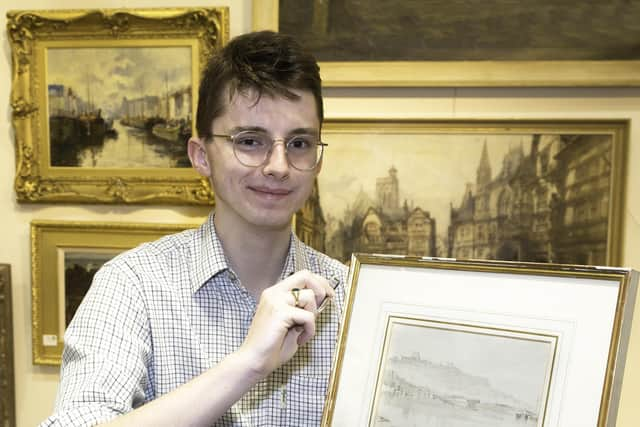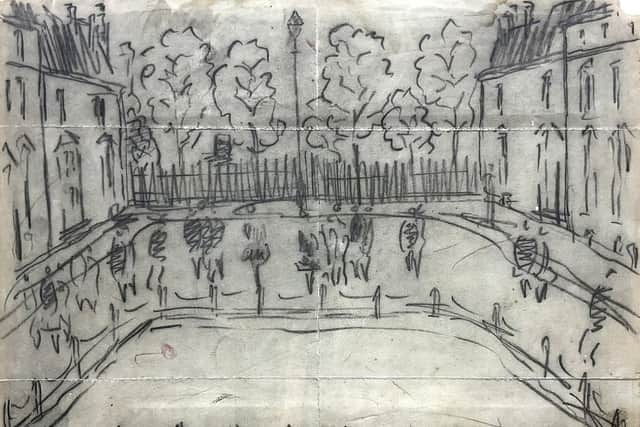John Constable painting: Long-lost sketch by famed artist found in an old suitcase in Leeds
and live on Freeview channel 276
he sketch of Dover harbour, which Constable created on a sailing trip in 1803, was found with a smashed frame in a house in Leeds. And restorers only realised the celebrated artist was responsible for the work when they found 'J Constable' written by hand on the back while repairing it.
It is one of 130 drawings that the landscape artist made during the month-long trip from London to Deal - although less than 50 are known to be left in existence. The sketch could now fetch around £3,000 when it goes under the hammer on Friday (Sept 15), more than two centuries after it was finished.
Advertisement
Hide AdAdvertisement
Hide AdDominic Cox, from auctioneers David Duggleby, said: "Thanks to a letter that Constable sent to a friend we know that the sketch was done on the last day of the trip.


"He wrote: 'I came on shore at Deal, walked to Dover (about one and a half hours) and the next day returned to London'. It's thought that Constable made as many as 130 drawings on the voyage although the whereabouts of less than fifty are known today."
Constable had been aboard an East Indiaman boat called the Coutts, which was captained by his father's friend Robert Torin, when he made the sketch in April 1803. And Mr Cox said it was 'lucky' that any of the artist's drawings had survived the trip after he left the vessel in a hurry when its captain decided to sail for China.
He said: "The sketch is a detailed view across the water of Dover harbour towards the quayside buildings, with the Castle high above the town and the cliffs stretching away into the distance.
Advertisement
Hide AdAdvertisement
Hide Ad"The location is identified at the bottom right and the year is lightly marked in the sky top right.Actually, it was only by the greatest good fortune that any of them survived.


"Constable had to get off the ship in a hurry when the decision to depart for China was taken and he left his carefully wrapped parcel of drawings behind. Luckily they were recovered before they ended up in the Far East."
Mr Cox said the painting was identified as an original Constable following the house clearance of the property of Leeds. It is thought the handwritten inscription on the back of the picture may have been penned by a family member when they later sold off his works.
Mr Cox said: "The frame glass was smashed when the drawing was found in a suitcase during the deceased estate house clearance.
Advertisement
Hide AdAdvertisement
Hide Ad"So the drawing was removed whilst repairs were made and it was then discovered that the back of the drawing itself bore the handwritten inscription 'J Constable'.
"That is an old inscription, perhaps added when members of his family sold off drawings and sketches after his death in 1837. It is not Constable's signature.
"The backing of the framed drawing bears the label of The Little Gallery of Kensington Church Walk in London, a gallery that was in business in the early 1970s and specialised in the sketches and drawings of big name artists that were far more readily available at that period than they are today.
"Their label is also inscribed in ink 'John Constable (1776-1837), Dover, circa 1803, pencil'."